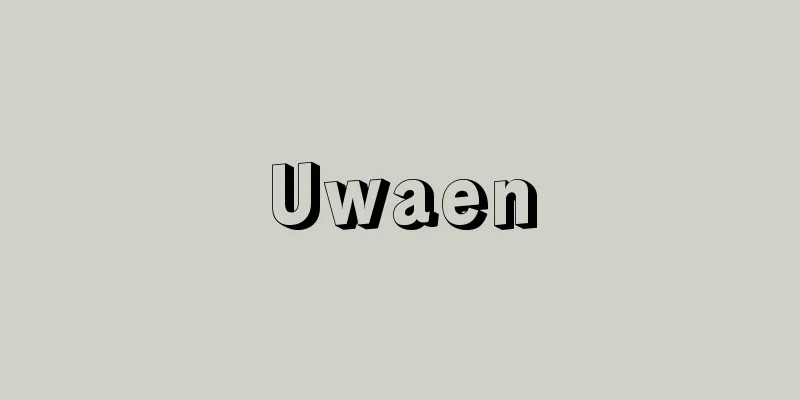Okura Nagatsune - Okura Nagatsune

|
Agriculturalist of the late Edo period. Born in Kuma-cho, Hita-gun, Bungo Province (Hita City, Oita Prefecture). His pen name was Motoshun, and he was commonly known as Tokubei or Kametayu, and he went by the name Kameo. His grandfather was an excellent cotton grower, and his family name was "Wataya," and he is thought to have not only grown cotton but also processed it. After his grandfather's death in 1778 (7th year of the An'ei era), he stopped growing cotton, and he and his father worked at a wax bleaching factory owned by a relative. He had a strong desire to learn, but his father told him to stop studying Confucianism, and he began researching agriculture. He left his hometown at the age of 20, moving around various parts of Kyushu, and at the age of 29, he went to Osaka, where he spent the next seven years researching agricultural production in various places and also studying Dutch studies under Hashimoto Sokichi. In 1802 (Kyowa 2), he published "Noukaeki" (Farmers' Benefits) in three volumes, and thereafter wrote over 80 books on agriculture until his death. In 1825 (Bunsei 8), he went to Edo, and thereafter, on the recommendation of Watanabe Kazan, he served the Mikawa Tahara Domain, and after Kazan's death, Mizuno Tadakuni served the Hamamatsu Domain, and from 1847 (Koka 4), he lived in Edo. In 1856 (Ansei 3), many friends gathered to celebrate his long life (89 years old), but his whereabouts are unknown since then. The culmination of his work, "Koueki Kunisanko" (Koeki Kunisanko), in eight volumes, was published in 1859, and including this, his published works total 27 volumes (69 books) and 6 volumes (10 books) remain unpublished. They can be categorized by content as follows: (1) Those related to special purpose crops: "Farmers' Benefits," "A Hundred Ways to Produce Rushes," "Sugarcane Comprehensive Development," "Essentials of Cotton Fields," "Papermaking Essentials," "Records of Oilseed Rape," "Records of Kudzu Production," "Agricultural Business," "Kadota no Sakae," "Thoughts on Domestic Production," and "Thoughts on Wide-reaching Domestic Production." [Yoichi Fukushima] "Okura Nagatsune, by Kotaro Hayakawa (1943, Yamaoka Shoten)" ▽ "Okura Nagatsune, by Tsuneharu Tsukuba (1969, Kokudosha)" [References] | |Locust | | | | |Illustration of wax making. Volume on people, by Nagatsune Okura, published in 1802 (Kyowa 2), held at the National Diet Library . "Farmer profits" Volume 2, by Okura Nagatsune, post-published in 1844 (Tenpo 15), held at the National Diet Library "Kyoeki Kokusan Kou" Source: Shogakukan Encyclopedia Nipponica About Encyclopedia Nipponica Information | Legend |
|
江戸後期の農学者。豊後(ぶんご)国日田郡隈町(大分県日田市)生まれ。字(あざな)は孟純、通称を徳兵衛または亀太夫といい、亀翁と号した。祖父は優れたワタ栽培家で、屋号を「綿屋」とよび、綿作のみならず加工を行っていたとみられる。1778年(安永7)祖父の死去に伴い、綿作をやめ、父と彼は親戚(しんせき)の蝋晒(ろうさら)し工場で働いたらしい。向学心が強かったが、父から儒学勉強を止められ、農学研究をするようになった。20歳で故郷を出、九州各地を転々とし、29歳のとき大坂に出、その後7年間、各地の農作を調べ、また橋本宗吉(そうきち)について蘭学(らんがく)も学んだ。1802年(享和2)『農家益(のうかえき)』3巻を刊行、以後、没するまでに80冊あまりの農書を著した。1825年(文政8)江戸に出、その後、渡辺崋山(かざん)の推挙で三河田原藩に、また崋山の死後、水野忠邦(ただくに)の浜松藩に仕え、1847年(弘化4)以降江戸に住んだ。1856年(安政3)多くの友人が集まって彼の長寿(89歳)を祝ったが、以後消息不明である。彼の仕事の集大成『広益国産考』全8巻が出たのは1859年で、それを含め、彼の著作で出版されたものは27部69冊、未刊6部10冊である。それらを内容で分類すると次のようである。 (1)特用作物に関するもの 『農家益』『琉藺百方(りゅうりんひゃっぽう)』『甘蔗大成(かんしゃたいせい)』『綿圃要務(めんぽようむ)』『抄紙必用(しょうしひつよう)』『油菜録』『製葛録(せいかつろく)』『農稼業事』『門田之栄(かどたのさかえ)』『国産考』『広益国産考』 [福島要一] 『早川孝太郎著『大蔵永常』(1943・山岡書店)』▽『筑波常治著『大蔵永常』(1969・国土社)』 [参照項目] | | | | | | |製蝋の挿絵。人之巻 大蔵永常著 1802年(享和2)刊国立国会図書館所蔵"> 『農家益』 二之巻 大蔵永常著 1844年(天保15)跋刊国立国会図書館所蔵"> 『広益国産考』 出典 小学館 日本大百科全書(ニッポニカ)日本大百科全書(ニッポニカ)について 情報 | 凡例 |
>>: Toraakira Okura - Okura Toraakira
Recommend
Air-pressurized caisson construction method - Air-pressurized caisson construction method
...The cut and fill method is used in shallow are...
ANAP - ANAP INC.
Official company name: ANAP Co., Ltd. English comp...
Ano Sanekado - Ano Sanekado
Year of death: Unknown (Year of death unknown) Yea...
Verse - Inbun
A piece of writing with a certain rhythm and form...
Complex systems
Systems with complicated structures and systems, ...
ASNE - ASNE
...ethical standards that newspapers or their org...
Zhu Quanzhong
The first emperor of the Later Liang Dynasty of t...
Ono [town] - Ohno
A former town in Ono County, southern Oita Prefect...
Trypanosoma cruzi
…[Kawaguchi Hiroaki]. … *Some of the terminology ...
Kantoku - Director
...The position of the planets, especially Jupite...
Circular pendulum
...This is called a horizontal pendulum and is us...
Namidatake (Tear Mushroom) - Gyrophana lacrymans
Basidiomycete, Agaricales, Family Zanthaceae. Also...
Kabira Village
…In 1951, the world's rare black pearls were ...
Xiamen University - Xiamen da-xue (English name)
A national comprehensive university in China. Foun...
Dielectric loss
When an AC electric field is applied to a dielect...









